Yes. Any magnetic field moving around any conductive material will create a current in that conductor, called electromagnetic induction.
Electric motors and generators operate on this principle, motors and generators being essentially the same machine, but perhaps slightly optimized or tested for different applications. Of course, these machines usually are designed to convert between rotational mechanical torque and electrical power.
The equivalent machine for linear motion is a solenoid. Drop a magnet inside a coil and apply a current to the coil, and the magnet will shoot out one way or the other, depending on the orientation of the magnet's poles and the polarity of the applied voltage. For a common example, take a look at the internals of a doorbell (the kind with a mechanical bell). When the doorbell is pressed, it applies 12V to a solenoid, which shoots a metal rod into the bell.
This also works in reverse: if you move the magnet in the coil, some of that kinetic energy you put into the magnet is converted to electrical energy in the coil.
If you make either the magnet or the coil very light so that sound waves can move it, you get a microphone. Or run it in the other direction, and you get a speaker, which is designed to handle vibrations of a much larger magnitude, but is essentially the same machine.
So, if you wanted to generate electricity from a doorknob, the easiest method would be to attach a generator to the knob. You can get any voltage you desire by mechanically gearing the generator or by selecting the appropriate generator. What you can't do is generate more power out of nowhere. Electrical power is the product of current and voltage:
$$ P = IE $$
Mechanical power is the product of angular velocity and torque:
$$ P = \omega \tau $$
If current is in amperes, voltage in volts, angular velocity in radians per second, and torque in newton\$\cdot\$meters, then power is in watts in both cases. The generator will convert mechanical power to electrical power with an efficiency of maybe 80%, and you will also have friction losses in the knob and any mechanical transmission. So, how much electrical power do you require? How much harder are you willing to make the doorknob to turn, and how many times are you willing to turn it?
Let's guess that a reasonable torque for a doorknob is \$0.5Nm\$ (about \$5 in-lbs\$) and we turn it 90 degrees over half a second. Our angular velocity is \$1rad/s\$. The mechanical power is then:
$$ P = 0.5Nm \cdot 1rad/s = 0.5W $$
We can further multiply that by time to convert power to energy:
$$ 0.5W \cdot 0.5s = 0.25 J $$
This is how much energy you have to work with in a single doorknob turn. But you won't be able to convert it with 100% efficiency; let's assume that after losses you have 50% of that energy, or one fourth of a joule. To put that into perspective, wolfram alpha tells me this is about equivalent to the acoustic energy in 25 whispers. Wikipedia describes a joule as approximately the energy required to lift an apple one meter, so you can lift it 25 centimeters. For comparison, a AAA alkaline battery can hold on the order of 5000J of energy.
Or we can think of this electrically. A capacitor stores energy like a battery. You said you need two volts: what value capacitor has stored 0.25J when charged to 2V? The energy \$W\$ in a capacitor is given by:
$$ W = \frac{1}{2} C V^2 $$
$$ 0.25J = \frac{1}{2} C (2V)^2 $$
$$ \dfrac{2\cdot 0.25J}{(2V)^2} = C = 125mF $$
So to get some idea if your idea is feasible, charge a 125mF capacitor up to 2V and see if it can power your device.
